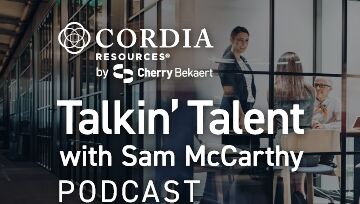In 2019, Congress changed the rules for required minimum distributions (RMDs) from inherited individual retirement account (IRA) and employer-sponsored account balance retirement plans by requiring distributions to most beneficiaries to occur within 10 years after the death of an IRA owner or plan participant.1 The statutory change simply modified what had been a rule requiring certain distributions to be made by the end of the fifth year, with no required distributions before that time, by substituting 10 years for 5 years. This was interpreted as allowing delayed distributions for 10 years. Proposed regulations, issued this spring, require annual distributions over the 10-year period beginning the year following the year in which the account is inherited, effective for decedents dying after 2019.
Many taxpayers want retirement savings to be distributed as late as possible to maximize the compounding of investment income tax deferred (tax free in the case of Roth IRAs). As a result, this requirement for annual distributions after the death of a plan participant or IRA owner is very controversial and may be modified in final regulations. Unfortunately, the proposed effective date is such that many individuals may have had 2021 RMDs which were not made and, must consider what to do about 2022 RMDs.
The Internal Retirement Services (IRS) and U.S. Department of the Treasury (Treasury) are working diligently to finalize these regulations but may not finish this year. Given the lack of guidance, taxpayers should expect a transition rule delaying required distributions for these inherited accounts. Whether the proposed regulation interpretation requiring annual distributions will be included in final regulations and, if included, the nature of a transition rule is unknown. With these unknowns, taxpayers with inherited IRAs or plan benefits can comply with the proposed regs and annual RMDs or consider delaying distributions as long as possible until additional guidance is released.
Tax Planning with Roth IRAs
Roth IRA owners do not have any RMD before death. Thus, assets held in a Roth IRA continue to compound earnings tax free for the life of the owner. Retirement savings held in an IRA or an employer’s retirement plan can often be transferred to a Roth with the value being taxed at transfer. With the decline in the value of marketable securities and an expectation of higher income tax rates for wealthy individuals after 2026, individuals should consider transferring amounts to Roth IRAs in 2022. The elimination of tax on future Roth IRA earnings, perhaps for as long as 10 years after an individual’s death, and the reduction in an individual’s taxable estate assets with the payment of income tax currently should be evaluated with the offset of additional income tax to be paid currently on the transfer.
Attracting and Retaining Workers During the Great Resignation
One way an employer can differentiate itself is by offering tax free benefits instead of taxable compensation. Both employers and employees benefit by understanding an employee’s expenses and paying tax free amounts to be used for those expenses. Repayment of student loans and payment of childcare expenses are personal expenses that many employees incur which can be provided tax free by an employer.
Helping employees save for a dependent’s education can relieve a financial burden many families face, even though employer payments to a qualified tuition program would be taxable when contributed by an employer. Earnings of and distributions from a qualified tuition program can be tax free.
Educational Assistance Programs
Through 2025, an educational assistance program can repay lenders or provide tax free reimbursement of principal and interest payments on an employee’s qualified education loans for their education. The annual amount that can be provided for this and other education costs (other than costs that maintain an employee’s current job skills and do not prepare an individual for a new job) is $5,250. Discrimination rules apply and an employee’s compensation cannot be reduced to provide this benefit.
Dependent Care Assistance Programs
A dependent care assistance program provides up to $5,000 per year to an employee to pay for or reimburse the employee for the cost of caring for a qualifying dependent, generally children under age 13. This can be in-home care (e.g., a nanny) or expenses for childcare outside the home (e.g., a day care center). Any expenses directly related to providing care to the dependent qualify, including employment taxes paid for a nanny, application fees for a childcare center and other items. Amounts paid to a relative other than a child under the age of 19 or other individuals who can be claimed as dependents on your income tax return qualify for tax-free reimbursements. This benefit can be provided on a salary reduction basis but does not have to be. Similar to an educational assistance program, various discrimination rules apply.
Qualified Tuition Savings Plans
A qualified tuition program or 529 Plan is a program established by a state or educational institution to fund qualified education expenses including elementary, secondary school or college education of a designated beneficiary, including a child or grandchild of an employee. The amount contributed to the account would be taxable to the employee, but the earnings would be tax exempt. As a taxable benefit, there are no discrimination rules that apply to these benefits. For that reason, some employers will offer this as a benefit only to employees who are already making their own contributions to such accounts. Other employers will want to provide this to employees who do not already contribute.
Program To Decrease the Cost of Retirement Plan Errors
In June, the IRS started a program which helps employers correct retirement plan errors prior to an IRS examination. Under this pilot program, an employer receives a letter 90-days before the start of an IRS exam telling the employer what provisions the IRS intends to exam in an upcoming audit and allowing the employer to correct any errors using self-correction or, in some cases, the Voluntary Compliance Program. An employer who reports the results of a self-audit of the items to be audited and corrects any errors could avoid an examination or have a limited examination. An employer who receives a letter but does not perform a self-audit and report findings to the IRS will be audited by the IRS.
Taxpayers receiving such letters should seek professional help and undertake the review of plan provisions identified by the IRS in the letter, the correction any errors found, and the communication with the IRS to inform them of status and corrections. This will avoid a more extensive IRS examination.
For assistance with these or other compensation and benefits issues, contact your Cherry Bekaert plan professional.
1Note that while these proposed rules provide more detail on how trusts can be beneficiaries eligible to use these rules, the detail of these requirements is beyond the scope of this article.




